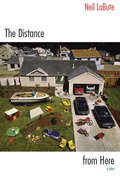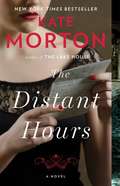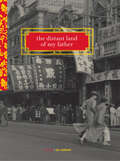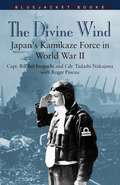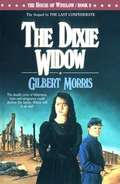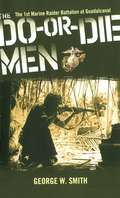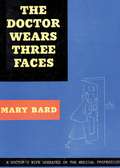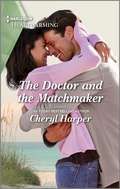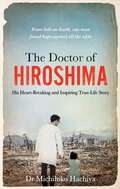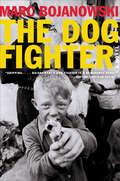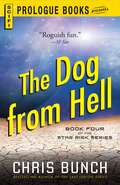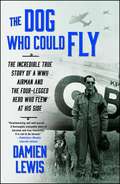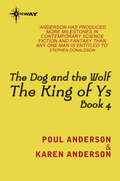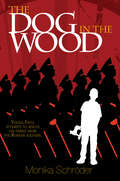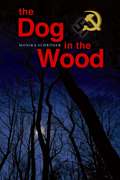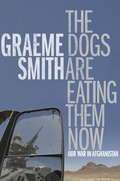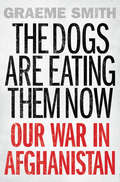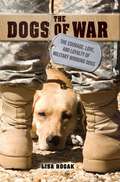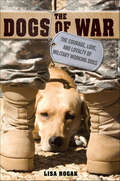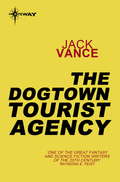- Table View
- List View
The Distance from Here: A Play
by Neil LabuteNo American playwright has written more compellingly about the subtle ways in which people inflict pain on each other than Neil LaBute. His films In the Company of Men and Your Friends and Neighbors both gained critical renown for their biting satire and caustic wit. Now, with The Distance from Here, he has written his most riveting play yet, an intense look at the dark side of American suburbia. With little to occupy their time other than finding a decent place to hang out—the zoo, the mall, the school parking lot—Darrell and Tim are two American teenagers who lack any direction or purpose in their lives. When Darrell’s suspicion about the faithlessness of his girlfriend is confirmed and Tim comes to her defense, there is nothing to brake their momentum as all three speed toward disaster.
The Distance from Here: A Play
by Neil LabuteNo American playwright has written more compellingly about the subtle ways in which people inflict pain on each other than Neil LaBute. His films In the Company of Men and Your Friends and Neighbors both gained critical renown for their biting satire and caustic wit. Now, with The Distance from Here, he has written his most riveting play yet, an intense look at the dark side of American suburbia. With little to occupy their time other than finding a decent place to hang out--the zoo, the mall, the school parking lot--Darrell and Tim are two American teenagers who lack any direction or purpose in their lives. When Darrell's suspicion about the faithlessness of his girlfriend is confirmed and Tim comes to her defense, there is nothing to brake their momentum as all three speed toward disaster.
The Distant Hours: A Novel
by Kate MortonFrom the New York Times bestselling author of Homecoming comes a haunting tale of long-buried secrets and the twists of fate that can alter lives forever.This enthralling romantic thriller pays homage to the classics of gothic fiction, spinning a rich and intricate web of mystery, suspense, and lost love. It starts with a letter, lost for half a century and unexpectedly delivered to Edie&’s mother on a Sunday afternoon. The letter leads Edie to Milderhurst Castle, where the eccentric Blythe spinsters live and where, she discovers, her mother was billeted during World War II. The elder Blythe sisters are twins and have spent most of their lives caring for their younger sister, Juniper, who hasn&’t been the same since her fiancé jilted her in 1941. Inside the decaying castle, Edie searches for her mother&’s past but soon learns there are other secrets hidden in its walls. The truth of what happened in &“the distant hours&” has been waiting a long time for someone to find it.
The Distant Land of My Father: A Novel
by Bo CaldwellAn ambitious man and his adoring daughter are separated and estranged by an ocean and by the tides of history in this “marvelous” novel (Los Angeles Times).For Anna Schoene, growing up in the magical world of Shanghai in the 1930s creates a special bond between her and her father. He is the son of missionaries, a smuggler, and a millionaire who leads a charmed but secretive life. When the family flees to Los Angeles in the face of the Japanese occupation, he chooses to stay, believing his connections and luck will keep him safe.He’s wrong—but he survives, only to again choose Shanghai over his family during the Second World War. Anna and her father reconnect late in his life, when she finally has a family of her own, but it is only when she discovers his extensive journals that she is able to fully understand him and the reasons for his absences. The Distant Land of My Father is a “beautiful” novel “for everyone who has ever felt himself in exile from any beloved place, or a time that can never return” (The Washington Post Book World).“Seamlessly weaves together Anna’s own memories with those of her father, gleaned from the journals . . . An elegant, refined story of families, wartime, and the mystique of memory.” —Kirkus Reviews“Vivid with details of prewar Shanghai and Los Angeles.” —Publishers Weekly“Lush and epic.” —San Jose Mercury News“Remarkable . . . A moving tale of love and the possibility of forgiveness.” —Library Journal
The Divine Wind
by Roger PineauThe authors were with the Japanese Naval Special Attack Force (Kamikaze Corps) from its inception in late 1944.
The Dixie Widow (House of Winslow, #9)
by Gilbert MorrisAfter losing her husband during the Civil War, Belle Wickham's blind hatred for the North compels her to live with her Winslow relatives in order to spy for the Confederacy.
The Do-Or-Die Men
by George W. SmithThe gripping true account of the 1st Marine Raider Battalion -- from its formation and training to its heroic baptism under fire in the battles of Tulagi and Guadalcanal. No campaign in World War II was undertaken with as many shortcomings as Operation Watchtower -- the invasion of Guadalcanal in the summer of 1942. Rushed into action with little training, virtually no enemy intelligence, and using equipment left over from World War I, the gutsy-but-green men of the 1st Marine Division and its attached units were thrown headlong into what would become one of the bloodiest battles of the war. During almost four trying months of constant shelling, bombing, and ground attacks, the 1st Marine Division defied all the odds and somehow managed to beat the hardened Japanese troops at their own game. No campaign in World War II was conducted with as much ferocity. No campaign saw such sustained violence on land, at sea, and in the air. And no other campaign hung in the balance for so long -- to finally be won by the unrelenting courage of a group of American heroes who never gave up the fight.
The Doctor Wears Three Faces
by Mary BardAs a family, the Bards were always special.In the really bad times of the Great American Depression of the late 'twenties and early 'thirties and in the not-quite-so-bad-times of the New Deal which followed, they hung together closely like a bunch of bananas: unfailingly bright, optimistic and funny, totally supportive of each other and endlessly hospitable to others of all ages, races and creeds less fortunate than themselves.The rock of the family was Sydney, the widowed mother. But undoubtedly the mover, the fixer and Unequalled Organiser-of-Others had to be Mary, the fizzing firecracker.And then she married a doctor.She became a Doctor's Wife without catching one glimpse of the Job Description. Even if she had, she would have married Jim anyway. She had always welcomed a challenge.Which was just as well, for otherwise we would have been robbed of this very enjoyable book in which a 'mover' and a 'do-er' of a Doctor's Wife gets to grips with possibly one of the most conservative professions on Earth.It could have been a recipe for disaster. Instead it produced this book--a sure-fire prescription for high entertainment.
The Doctor and the Matchmaker: A Clean Romance (Veterans' Road #3)
by Cheryl HarperHis troublesome matchmaker…Could be &“the one&”!Former navy surgeon Wade McNally is sure his upcoming date with a lovely lady will check &“meet the perfect woman&” off his to-do list. Until he learns his date&’s sister tricked him. Desperate to keep her shenanigans a secret, Brisa Montero agrees to find Wade the right match. But summer days swimming and exploring with the handsome doctor and his clever daughter make Brisa wonder if the right match is closer than she thought!USA TODAY Bestselling AuthorVeterans&’ RoadBook 1: A Soldier SavedBook 2: The Dalmatian DilemmaBook 3: The Doctor and the Matchmaker
The Doctor of Hiroshima: His heart-breaking and inspiring true life story
by Dr. Michihiko HachiyaWith what this poor woman had been through the sight of her crying tore at my heartstrings. What if something should happen to her; who would care for her little baby? To conceal the fear and terror in my heart I left her, trying to put up a cheerful front. But no one could conceal from her the ominous import of the dark spots that had appeared on her chest.The Doctor of Hiroshima is the extraordinary true story of Dr Michihiko Hachiya, whose hospital was less than a mile from the centre of the atomic bomb that hit on that warm August day. In immense shock and pain, he and his wife Yaeko dragged themselves to the devastated hospital building and what colleagues they could find.In time, they begin to heal, and start to treat the impossible numbers of patients - a small girl covered in burns, an elderly man with pneumonia, a young boy and his little sister looking for their parents. They also began to investigate the strange unexplainable symptoms afflicting his patients - things he never dreamed he would see... Told simply and poignantly in Dr Hachiya's own words, The Doctor of Hiroshima is a unique and deeply moving human story of survival about a small, committed band of hospital staff in the face of unthinkable destruction and loss.
The Doctrine of Fascism: With "the Political And Social Doctrine Of Fascism"
by Benito MussoliniThe Doctrine of Fascism by Benito Mussolini is a seminal work that lays out the ideological foundation of fascism, a political movement that emerged in Italy under Mussolini’s leadership in the early 20th century. Co-authored with the philosopher Giovanni Gentile, this book articulates the key principles and beliefs that define fascism, presenting it as a response to the social, political, and economic challenges of the time.Mussolini’s work is a passionate and forceful expression of his vision for a new political order, one that rejects liberal democracy, socialism, and individualism in favor of a strong, centralized state led by a charismatic leader. In The Doctrine of Fascism, Mussolini argues that the state is the ultimate expression of collective will and that the individual exists only in service to the state. He emphasizes the importance of unity, discipline, and the subordination of personal interests to the greater good of the nation.The book also delves into the philosophical underpinnings of fascism, drawing on themes of nationalism, authoritarianism, and the belief in the transformative power of violence and struggle. Mussolini portrays fascism as a dynamic and revolutionary movement, capable of creating a new civilization and restoring the greatness of Italy.While The Doctrine of Fascism is a powerful statement of Mussolini’s political philosophy, it is also a controversial and polarizing work. It provides invaluable insight into the ideas that fueled one of the most significant and destructive ideologies of the 20th century, making it essential reading for students of history, political science, and those interested in understanding the roots of totalitarianism.This book serves as both a historical document and a cautionary tale, reminding readers of the dangers of extremist ideologies that prioritize state power over individual freedoms and democratic values. Mussolini’s The Doctrine of Fascism remains a critical resource for those seeking to comprehend the complexities and implications of fascist thought.
The Dog Fighter: A Novel
by Marc BojanowskiThe anonymous narrator of this remarkable debut novel is a young drifter in search of his future. The son of a passionate beauty and gentle doctor, he roams the border between the United States and Mexico, eventually settling in a sleepy Baja town on the verge of transformation. Here he learns to stand face-to-face with dogs in a makeshift ring, to fight for money and fame, and becomes involved with a powerful and corrupt entrepreneur. But when he finds friendship with a revolutionary old poet and love with a beautiful, innocent girl, everything changes. Caught between the ways of his past and the dreams of his future, he must make a devastating choice that could cost him everything.The Dog Fighter is an exhilarating tale of brutality and violence, love and wisdom, heartbreak and redemption.
The Dog From Hell
by Chris BunchWhile escorting a group of privileged and wild girls from a finishing school on Earth to one of the luxury worlds, the Star Risk Ltd. team crosses paths with the huge security firm, Cerebus Systems--which has just put Star Risk Ltd. on the top of its enemy list. Original.
The Dog From Hell
by Chris BunchIt should have been an easy contract for the mercenaries of Star Risk, Ltd. Escort a group of snobbish, privileged - and slightly wild - girls from their finishing school on Earth to one of the luxury worlds. But that was before the kidnapping and murders started.Cerberus Systems, the massive, terrifying security firm that thunders across the galaxy, has Star Risk squarely in its sights. And the goons from the company named for a hound of hell aren't going to let anything, or anyone, stand in their way.
The Dog From Hell: Book Four of the Star Risk Series
by Chris BunchIt should have been an easy contract for the mercenaries of Star Risk, Ltd. Escort a group of snobbish, privileged - and slightly wild - girls from their finishing school on Earth to one of the luxury worlds. But that was before the kidnapping and murders started.Cerberus Systems, the massive, terrifying security firm that thunders across the galaxy, has Star Risk squarely in its sights. And the goons from the company named for a hound of hell aren’t going to let anything, or anyone, stand in their way.
The Dog Who Could Fly: The Incredible True Story of a WWII Airman and the Four-Legged Hero Who Flew At His Side
by Damien Lewis&“A thoroughly enjoyable story of heroism and true friendship&” (Publishers Weekly, starred review), this is the true account of a German shepherd who was adopted by the Royal Air Force during World War II, flying countless combat missions and ultimately saving the life of his owner and dearest friend.In the winter of 1939, in the cold snow of no-man&’s-land, two loners met and began an extraordinary journey that would turn them into lifelong friends. One was an orphaned puppy, abandoned by his owners as they fled Nazi forces. The other was a different kind of lost soul—a Czech airman bound for the Royal Air Force and the country that he would come to call home. Airman Robert Bozdech stumbled across the tiny German shepherd—whom he named Ant—after being shot down on a daring mission over enemy lines. Unable to desert the puppy, Robert hid Ant inside his jacket as he escaped. In the months that followed, the pair would save each other&’s lives countless times as they flew together with RAF Bomber Command. Finally grounded after being injured on a flight mission, Ant refused to abandon his duty, and refusing food and sleep until they were reunited. By the end of the war, Robert and Ant had become true war heroes, and Ant was justly awarded the Dickin Medal, the &“Animal VC.&” With beautiful vintage black-and-white photos of Robert and Ant, The Dog Who Could Fly is a deeply moving story of loyalty in the face of adversity and the unshakable bond between a man and his best friend.
The Dog and the Wolf: King of Ys Book 4 (KING OF YS #4)
by Poul Anderson Karen AndersonYs has fallen, murdered by her god in an act of senile vengeance. Now Gratillonius, once King of Ys, must strive to save a remnant of his people from utter destruction - then use them to rescue civilisation itself, as the light that once was Rome flickers out and barbarian night descends upon the world.In the process, he will give rise to a legend that will ring down the corridors of time . . .
The Dog in the Wood
by Monika SchroderWhen the Russians come, where do you go? Fritz loves his vegetable garden. His tomatoes are delicious, he's attentive to the asparagus, and he remembers how to keep slugs off the strawberries. But his tranquil life on the family farm is about to end—the Russians are near, Hitler has died, and known Nazi sympathizers like the Friedrich family brace for the Bolsheviks to take over their town. Local German supporters of the Bolshevik regime seize the Friedrich farm in the name of Communism, forcing Fritz's family to flee to the distant house of his grandmother, Oma Clara. Life there for Fritz is horrible, made even worse when Communists arrest his mother and Lech, the Polish farmhand who has tended the Friedrich land, for hiding weapons. Though there is no evidence to support the accusation, Gertrude and Lech are taken away, and Fritz commits to finding where they are imprisoned. Despite the boy's heroic efforts, the story ends with one of the war's ambiguities: that Lech and Gertrude may not return home.Heavy footsteps sounded on the tiles in the hallway. Then three soldiers entered the living room. They all wore torn green jackets with small red flags sewn onto their sleeves. They shouted in Russian. Fritz held Mama's hand and tried to stay as close to her as possible on the sofa. One of the soldiers broke the glass of the sideboard with the butt of his rifle, took out the bottle of brandy, drank from it, and passed it to the others. They rummaged through the china cabinet, throwing the plates on the floor. . . . Mama held his hand with a firm grip. Suddenly, one soldier pointed his rifle at them. "No!" Mama screamed. Fritz held his breath. "Stojat!" Lech stepped toward the middle of the room, holding his arms up. —FROM THE BOOK
The Dog in the Wood
by Monika SchröderAs World War II draws to an end, Russian soldiers occupy Schwartz, Germany, bringing both friendship and hardship to the family of ten-year-old Fritz, whose grandfather was a Nazi sympathizer, eventually forcing them to leave their farm.
The Dogs Are Eating Them Now
by Graeme SmithFor readers of War by Sebastian Junger, We Wish to Inform You That Tomorrow We Will Be Killed With Our Families by Philip Gourevitch, and The Forever War by Dexter Filkins: The Dogs Are Eating Them Now is a raw, uncensored account of the war in Afghanistan from a brilliant young reporter who for several years was the only Western journalist brave enough to live full-time in the dangerous southern region. The Dogs are Eating Them Now is a highly personal narrative of our war in Afghanistan and how it went dangerously wrong. Written by a respected and fearless former foreign correspondent who has won multiple awards for his journalism (including an Emmy for the video series "Talking with the Taliban") this is a gripping account of modern warfare that takes you into back alleys, cockpits and prisons--telling stories that would have endangered his life had he published this book while still working as a journalist.From the corruption of law enforcement agents and the tribal nature of the local power structure to the economics of the drug trade and the frequent blunders of foreign troops, this is the no-holds-barred story from a leading expert on the insurgency. Smith draws on his unmatched compassion and a rare ability to cut through the noise and see the broader truths to give us a bold and candid look at the Taliban's continued influence--and at the mistakes, catastrophes and ultimate failure of the West's best intentions.
The Dogs are Eating Them Now: Our War in Afghanistan
by Graeme SmithThe Dogs are Eating Them Now is a highly personal narrative of our war in Afghanistan and how it went dangerously wrong. Written by a respected and fearless former foreign correspondent who has won multiple awards for his journalism (including an Emmy for the video series "Talking with the Taliban") this is a gripping account of modern warfare that takes you into back alleys, cockpits, and prisons -telling stories that would have endangered his life had he published this book while still working as a journalist. Smith was not simply embedded with the military: he operated independently and at great personal risk to report from inside the war, and the heroes of his story are the translators, guides, and ordinary citizens who helped him find the truth. They revealed sad, absurd, touching stories that provide the key to understanding why the mission failed to deliver peace and democracy.From the corruption of law enforcement agents and the tribal nature of the local power structure to the economics of the drug trade and the frequent blunders of foreign troops, this is the no-holds-barred story from a leading expert on the insurgency.
The Dogs of War: The Courage, Love, and Loyalty of Military Working Dogs
by Lisa RogakMilitary working dogs gained widespread attention after Cairo participated in the SEAL Team 6 mission that led to Osama bin Laden's death. Before that, few civilians realized that dogs served in combat, let alone that they could parachute from thirty thousand feet up. The Dogs of War reveals the amazing range of jobs that our four-legged soldiers now perform, examines the dogs' training and equipment, and sets the record straight on those rumors of titanium teeth. You'll find heartwarming stories of the deep bond that dogs and their handlers share with each other, and learn how soldiers and civilians can help the cause by fostering puppies or adopting retirees. An incredible story of the largely unseen but vital role that dogs play in our armed forces, The Dogs of War is a must-read for animal lovers everywhere.
The Dogs of War: The Courage, Love, and Loyalty of Military Working Dogs
by Lisa RogakAn incredible story of the largely unseen but vital role that dogs play in our armed forces, Lisa Rogak's The Dogs of War is a must-read for animal lovers everywhere.Military working dogs gained widespread attention after Cairo participated in the SEAL Team 6 mission that led to Osama bin Laden's death. Before that, few civilians realized that dogs served in combat, let alone that they could parachute from thirty thousand feet up.The Dogs of War reveals the amazing range of jobs that our four-legged soldiers now perform, examines the dogs' training and equipment, and sets the record straight on those rumors of titanium teeth. You'll find heartwarming stories of the deep bond that dogs and their handlers share with each other, and learn how soldiers and civilians can help the cause by fostering puppies or adopting retirees.
The Dogtown Tourist Agency
by Jack VanceMiro Hetzel is an effectuator: a private investigator and gentleman of the Gaean Reach. This book contains two stories of his adventures. "The Dogtown Tourist Agency" - The Istagam Corporation has found an inexpensive means of manufacturing technical goods which greatly undercuts its competition. Hetzel, hired by that competition, must trace down the mysterious Istagam and discover their secret. His investigation leads him to the dangerous and exotic planet Maz, whose inhuman inhabitants' life cycle is dependent upon conflict and warfare. There he becomes embroiled in murder. "Freitzke's Turn" - Hetzel must locate one Faurence Dacre, a brilliant surgeon and sociopath who has stolen the body parts of Hetzel's client. In order to locate Dacre, Hetzel must retrace the man's history to find his likely hiding place.
The Dollar and National Security: The Monetary Component of Hard Power
by Paul R. ViottiDefense establishments and the armed forces they organize, train, equip, and deploy depend upon the security of capital and capital flows, mechanisms that have become increasingly globalized. Military capabilities are thus closely tied not only to the size of the economic base from which they are drawn, but also to the viability of global convertibility and exchange arrangements. Although the general public has a stake in these economic matters, the interests and interpretive understandings held by policy elites matter most—in particular those among the owners or managers of capital who focus on international finance and the international monetary regimes that sustain global commerce and their capital positions. In The Dollar and National Security, Paul Viotti explores the links between global capital flows, these policy elites, and national security. After establishing the historical link between currency, gold, and security, he continues the monetary-security story by examining the instrumental role the dollar has played in American economic and national security over the past seven decades. He reveals how perceived individual and collective interests are the key drivers toward building the kind of durable consensus necessary to sustain the external financing of American foreign and national security policy, and addresses the future implications for national security as decision-makers in the BRICs and other countries position themselves to assume an even larger policy presence in global commercial, monetary, and security matters.
